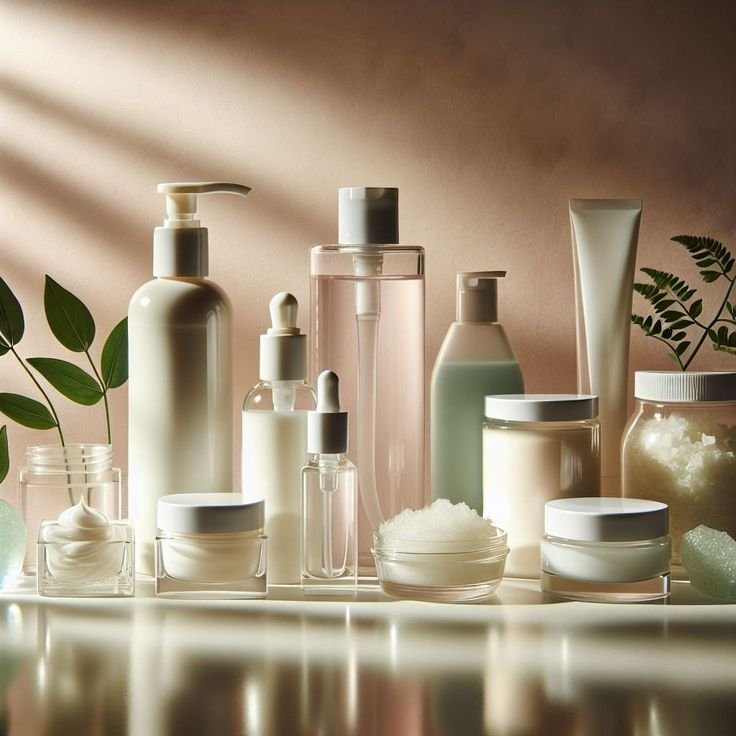Introduction
By 2025, several U.S. states — led by California’s Assembly Bill 2771 — will prohibit intentionally added PFAS in cosmetics. As a result, formulators are racing to remove PTFE, perfluorooctyl derivatives, and fluoropolymer coatings from their ingredient lists. These compounds, once valued for slip and sensory properties, now face scrutiny due to persistence and potential toxicity. Therefore, chemists must identify non-fluorinated alternatives that preserve texture, spreadability, and durability while complying with emerging clean-beauty standards. This article explains how to transition toward PFAS-free formulating and highlights safe replacement materials for the next regulatory era.
Scientific Background
What Are PFAS and Why They Are Banned
Per- and polyfluoroalkyl substances (PFAS) are a large family of fluorinated compounds characterized by highly stable C–F bonds. Because of this stability, they resist degradation and accumulate in the environment — earning the nickname “forever chemicals.” Historically, cosmetic formulators used PFAS such as PTFE and perfluorooctyl triethoxysilane to create water-resistant, silky finishes. However, emerging data links certain PFAS to endocrine disruption, reproductive toxicity, and bioaccumulation. Consequently, regulatory agencies worldwide have begun restricting their use.
California AB 2771 and State-Level Actions
The California PFAS ban (AB 2771) becomes effective January 1, 2025, and prohibits manufacturing or selling cosmetics containing intentionally added PFAS. Meanwhile, other states — including Washington, Colorado, Maine, and Minnesota — have passed similar legislation. In addition, federal agencies such as the U.S. EPA are evaluating nationwide reporting and cleanup rules under the Toxic Substances Control Act (TSCA). Therefore, proactive substitution is essential for any brand or supplier serving the U.S. market.
Regulatory Alignment Beyond the U.S.
The European Chemicals Agency (ECHA) is also considering a broad PFAS restriction under REACH, which would affect imported cosmetic raw materials. Consequently, companies that phase out PFAS now will gain an advantage in both regulatory compliance and sustainability marketing.
Comparative Insights
Performance Gaps After Removing PFAS
PFAS ingredients historically provided a unique sensorial profile: low surface tension, enhanced glide, and strong film formation. Removing them may cause formulation drag, reduced wear resistance, or whitening on application. Nevertheless, recent innovations offer non-fluorinated materials that deliver comparable results. For instance, volatile alkanes such as Hemisqualane and C13-15 Alkane provide excellent spreadability and fast dry-down without environmental persistence. Similarly, natural silicone alternatives like D5 Replacement Ester Blend recreate slip and shine while remaining biodegradable.
Texture and Film-Forming Alternatives
Instead of PTFE powders, formulators can employ microspheres based on Polycaprolactone Microspheres or silica beads to achieve soft-focus effects. For waterproofing, solid lipid nanoparticles (SLN) and natural wax dispersions form breathable films that replicate fluoropolymer durability. Furthermore, starch- and cellulose-based polymers offer smooth sensory properties and are accepted by clean-beauty standards. Through careful optimization, chemists can maintain product performance while ensuring PFAS-free claims.
Formulation Guide
Key Steps Toward PFAS-Free Compliance
Transitioning to PFAS-free systems requires more than ingredient substitution. First, audit every raw material, including coated pigments and treated powders, since PFAS can appear as surface modifiers. Next, request supplier statements confirming “no intentionally added PFAS.” Afterwards, reformulate using clean alternatives and validate product stability and performance. Finally, document these changes in your regulatory dossier for transparency.
Alternative Ingredient Categories
- Volatile Hydrocarbons: Hemisqualane, isohexadecane, C13-15 Alkane – for sensory and spread.
- Biodegradable Polymers: Polycaprolactone (PCL) Microspheres, starch esters – for film formation.
- Emollient Esters: Coco-caprylate, neopentyl glycol diheptanoate – to mimic slip.
- Natural Waxes: Rice bran, carnauba, and sunflower wax – for structure and gloss.
- Lipid Nanocarriers: NLC System and SLN System – for water resistance and enhanced wear.
Testing and Verification
Analytical verification strengthens PFAS-free claims. Therefore, request fluorine screening using LC-MS/MS or total organic fluorine (TOF) analysis from certified labs. In addition, conduct performance comparisons to ensure consumer perception remains consistent. Document all results in your Claims & Testing Hub files for traceability and regulatory defense.
Compliance, Safety, and Claims
Compliant Marketing Language
When promoting PFAS-free products, wording must remain factual and non-misleading. For example:
- “Formulated without intentionally added PFAS.” ✅
- “Compliant with California AB 2771.” ✅
- “PFAS-free and environmentally responsible.” ✅
- “100% safe and toxin-free.” ❌ (Avoid absolute or unsubstantiated claims)
Always link such statements to documented supplier certificates and analytical data. Moreover, include PFAS-free verification under your product’s dossier section within the Grand Ingredients Product Center.
Safety Documentation and Auditing
To demonstrate due diligence, maintain an updated database of supplier declarations, lab test results, and reformulation notes. These materials should align with your MoCRA Safety Dossier Template structure. Consequently, auditors and clients can confirm PFAS elimination quickly, reinforcing confidence in your compliance systems.
Summary & Key Takeaways
Checklist for PFAS-Free Transition
- Audit all raw materials for intentionally added PFAS.
- Secure supplier non-PFAS certification statements.
- Substitute PTFE and fluoropolymers with biodegradable alternatives.
- Test fluorine content via LC-MS/MS or TOF.
- Update MoCRA dossier with PFAS-free confirmation.
Next Steps for Chemists
Moving to PFAS-free formulations is both a compliance necessity and an innovation opportunity. Therefore, explore new sensorial materials that align with sustainability trends. Visit our Product Center for ready-to-use PFAS-free actives and delivery systems. Additionally, you can Request a Sample to evaluate texture and compatibility in your own lab. Ultimately, preparing today ensures your formulas remain market-ready when PFAS bans take full effect in 2025.







